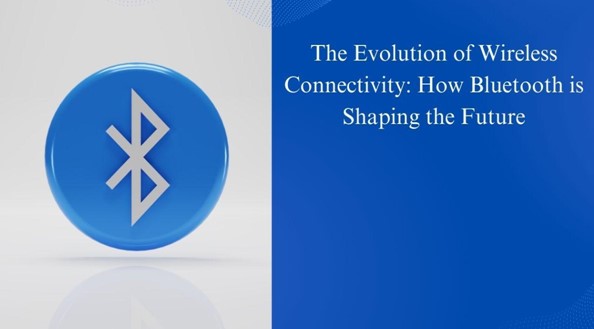Wireless communication has evolved significantly over the past few decades, with Bluetooth technology at the forefront of this transformation.Subhagato Dutta, an expert in wireless communication, explores the advancements that have shaped Bluetooth from a basic short-range protocol to an essential component of modern connectivity.
The Foundation of Bluetooth: A New Era of Wireless Communication
Originally developed as a short-range wireless communication standard, Bluetooth was designed to replace traditional cables for connecting personal devices. Early implementations focused on enabling seamless connectivity for peripherals such as keyboards, mice, and audio devices. Operating in the 2.4 GHz ISM band, Bluetooth quickly gained popularity due to its ease of integration and low power consumption.
The Shift Towards Higher Data Rates and Broader Applications
As consumer demands for wireless communication expanded, Bluetooth evolved to support higher data rates. The introduction of Enhanced Data Rate (EDR) in Bluetooth 2.0 marked a turning point, increasing transfer speeds up to 3 Mbps. This development allowed Bluetooth to handle more complex tasks such as wireless audio streaming and large file transfers, further integrating it into mobile devices and personal electronics.
Low Energy Revolution: Enabling IoT and Wearable Technology
One of the most significant breakthroughs in Bluetooth history was the development of Bluetooth Low Energy (BLE) with version 4.0. BLE was designed specifically for power-sensitive applications, making it an ideal choice for wearables, medical devices, and IoT sensors. By significantly reducing power consumption, BLE extended the battery life of connected devices, enabling continuous operation for months or even years without frequent recharging.
Expanding Range and Connectivity with Bluetooth 5.x
Bluetooth 5.0 introduced enhancements that extended connectivity range up to four times and doubled data transfer speeds. The improvements in broadcasting capacity also allowed devices to communicate more efficiently, making Bluetooth a reliable solution for smart home systems and industrial IoT applications. The introduction of direction-finding capabilities in Bluetooth 5.1 further improved location accuracy, supporting navigation and asset-tracking solutions.
Mesh Networking: Revolutionizing Large-Scale Deployments
A significant enhancement in recent Bluetooth versions is the adoption of mesh networking, a breakthrough that transforms traditional point-to-point connections into large, decentralized networks. This technology enables multiple devices to communicate seamlessly, boosting reliability, scalability, and efficiency. It is particularly beneficial for industrial automation, smart buildings, and large-scale sensor networks, ensuring stable, low-latency, and energy-efficient communication. By allowing devices to relay messages across multiple nodes, Bluetooth mesh networking eliminates single points of failure, enhances coverage, and supports complex IoT ecosystems, making it a cornerstone of modern wireless connectivity solutions.
Security Enhancements and Data Protection
As Bluetooth technology sees widespread adoption in healthcare and enterprise applications, ensuring robust security has become paramount. The introduction of LE Secure Connections and advanced encryption mechanisms, such as Elliptic Curve Diffie-Hellman (ECDH), has significantly strengthened data protection. These security enhancements mitigate risks like eavesdropping and unauthorized access, safeguarding sensitive medical and business data. In healthcare, secure Bluetooth facilitates reliable patient monitoring and device communication, while in enterprise environments, it supports encrypted data transfers and secure authentication. By integrating stronger cryptographic protocols, Bluetooth has evolved into a trusted medium for critical applications, reinforcing privacy and compliance with stringent security standards.
The Future: Integration with Next-Generation Technologies
As the demand for wireless connectivity continues to grow, Bluetooth is expected to integrate with next-generation cellular networks, such as 5G and 6G. This integration will enhance Bluetooth’s ability to support ultra-low latency applications, including augmented reality (AR), virtual reality (VR), and autonomous systems. Additionally, continued advancements in power efficiency and audio streaming through LE Audio will further improve the quality and functionality of Bluetooth-enabled devices.
In conclusion, Bluetooth has evolved from a basic cable replacement to a vital force in modern connectivity. Advancements in range, speed, energy efficiency, and security have cemented its role in IoT, consumer electronics, and industrial automation. As wireless standards progress, Bluetooth’s adaptability ensures its continued relevance. Subhagato Dutta’s insights emphasize its enduring impact on shaping the digital landscape, making it a cornerstone of wireless communication for the future.



































